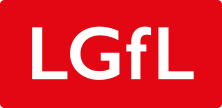A |
Artificial lighting | Lighting from man-made lighting sources which rely on electricity. |
B |
||
C |
Circulation | Spaces that allow people to move easily around a building. |
| Context | The surrounding conditions of the area - these might include the height of existing buildings, materials, the position of the main road and access, orientation, direction of south. | |
D |
Design | Process of developing ideas. |
| Decoration | Elements added to the building to give it a particular ‘look’ or feel. | |
| Durable | Long-lasting. | |
E |
Elevation | Views of the front, back and side of a building. |
F |
Function | Use or purpose. |
G |
||
H |
Hierarchy | Is an order of objects or spaces according to their importance. |
I |
Insulation | The ability of a material to prevent the passage of heat. Materials therefore have an impact on how much heat the building retains and loses. |
J |
||
K |
||
L |
Load bearing | An element of the structure that supports the weight above. |
M |
||
N |
Natural lighting | Lighting from the sun. |
O |
Orientation | The direction in which a space and its windows face. This affects the amount and quality of light that reaches inside spaces. In the northern hemisphere:
|
P |
Plan | A drawing showing the layout of a building (a bird’s eye view). |
| Prospect | Views from the building. | |
Q |
||
R |
Re-use | To use old materials for new purposes. |
| Recycle | To break down old materials and use their components to manufacture new elements. | |
S |
Scale | Is the size of one space in comparison to another space or element. |
| Structural Frame | A steel or concrete frame that supports the building. | |
| Shading | Helps control the level of light within a space and the temperature, aiming to diffuse light, prevent glare and keep the temperature constant.
|
|
T |
Three dimensional | Not flat, but with height, width and depth. |
| Thermal mass | A building’s ability to retain heat that it has absorbed during the day and to release it at night. In this country buildings that use their materials to stay warm in the colder weather and cool in the warmer weather use less energy and help protect the environment. The ability to absorb warmth during the day and then release it during the evening when the weather is cooler is called “thermal mass”. | |
U |
||
V |
||
W |
||
X |
||
Y |
||
Z |

